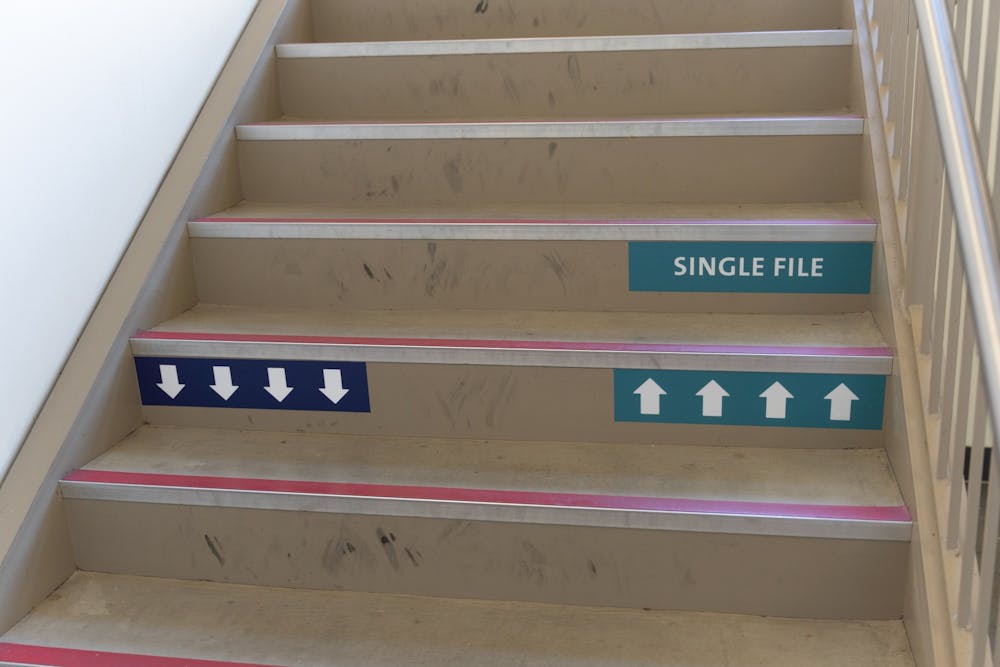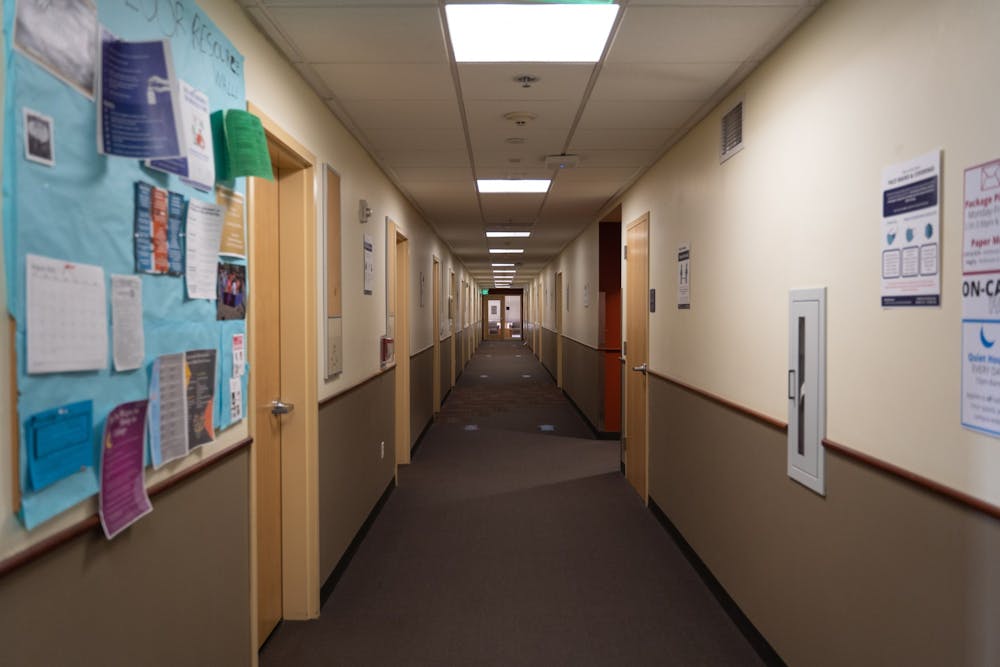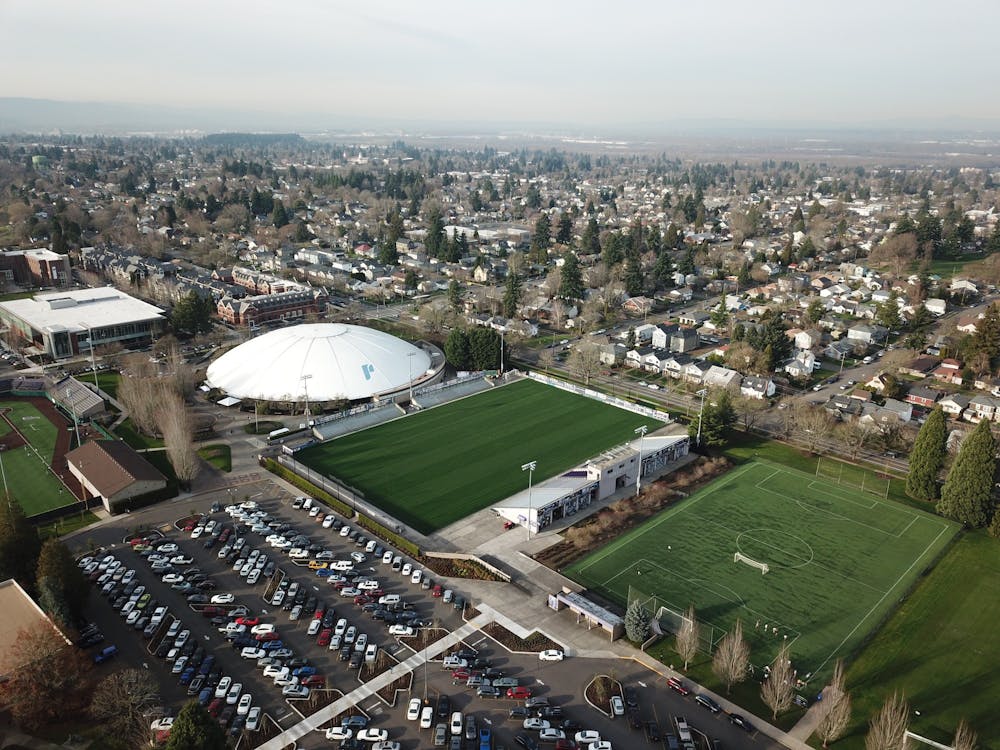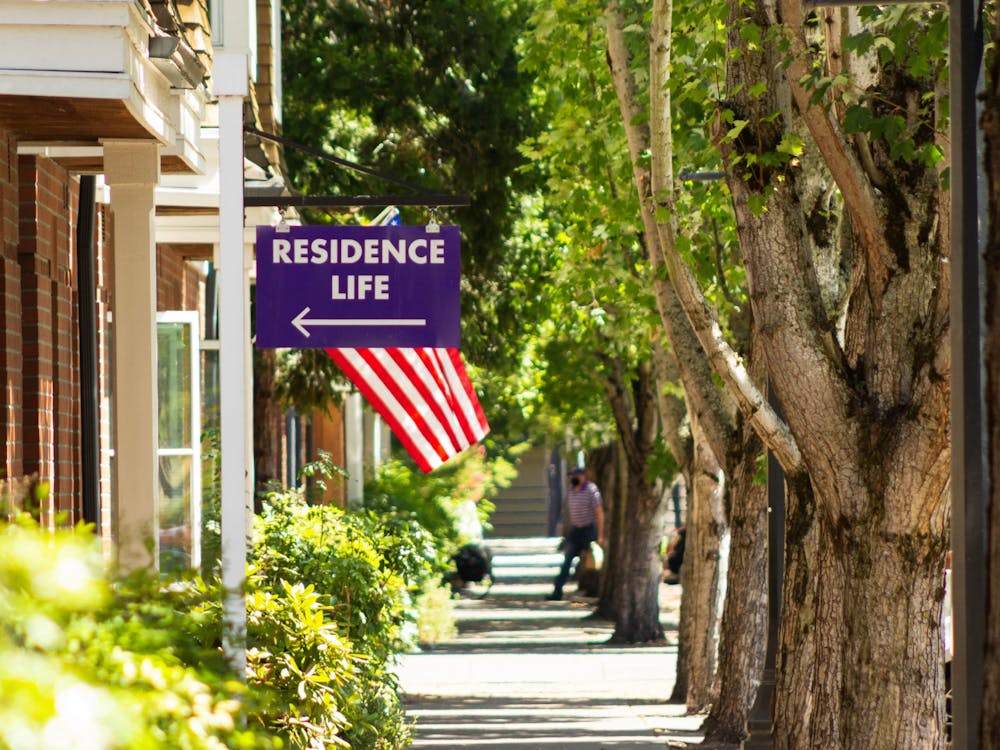On paper, junior Nick Hinson’s daily routine might not look very different from a normal school year — except that it takes place in its entirety within 173 square feet: his solitary Schoenfeldt double. He leaves this (very familiar) space only to get grab-and-go food from the Commons, or to work out at the gym, his hands washed and mask handy. And then, back to his room for a full day of classes.
Dorm life has endured several noteworthy COVID-19 induced changes over the past few months. Where before they were bustling hubs of student activity, today the 11 residence halls stand still and (for the most part) silent — the exceptions being Fields, Schoenfeldt, Haggerty and Tyson Halls. These are the only buildings that roughly 230 on-campus students have made a home in this semester. The other seven buildings house only their hall directors and pastoral residents.
For Hinson, living in Schoenfeldt Hall has provided a sense of security in uncertain times.
“I didn't have a place to live in Portland,” Hinson said. “Living on campus, and just having a secure spot, was exactly what I needed.”
Senior and ASUP president Sage Taylor, on the other hand, is living on campus as a COVID-19 precaution for other people.

“I'm from Portland, but some people close to me are at risk,” Taylor said. “I just knew that, to a degree, I would be still interacting with people in a socially distant way because that's what my professional role calls for.”
Both Taylor and Hinson have fallen into a routine in the dorms. According to Taylor, his routine is reliable and constant, which creates a much-needed sense of stability. Hinson feels similarly.
“I'll have all my classes online, and then work, and if I have some free time, I'll be reading or watching Netflix,” Hinson said. “If I’m out getting food or working out, I'll see some people there.”
Otherwise, according to Hinson, he’s unlikely to see a lot of students around. Taylor has found this lack of social interaction to be conducive to his senior year workload.
“But I know for a fact as soon as campus starts filling up and there are more people here, I'll immensely enjoy that as well,” Taylor said.
The main differences that Taylor has felt living on campus this year aren’t necessarily because of COVID-19. Rather, they’ve come from the switch from living in Villa Maria Hall to Schoenfeldt Hall.
“In Villa, there's a not enforced, but heavily encouraged, open door policy,” Taylor said. “Here in Schoenfeldt, the doors are too heavy to stay open. In that regard, it's a very different experience, and honestly, as a senior who's busy, it's the ideal experience.”
According to Hinson, it’s easy to see the changes that COVID-19 has caused in the dorms: from assigned washers and dryers to do laundry in, to sparser hall masses and signs directing socially-distant foot traffic.

But, even though so much has changed, Schoenfeldt Hall is making a conscious effort to maintain the feel of residence life.
“We have a lot of outdoor activities,” Hinson said. “We had an ice cream and movie night on the basketball court outside.”
Both Hinson and Taylor said that hall staff has done a good job of including their residents in safe, social activities.
“It definitely still feels like I'm at UP and getting that UP experience, just in a different sense,” Taylor said.
Though Hinson and Taylor are both grateful for the opportunity to live on campus, there have been difficult parts. Hinson mostly ran into difficulties during the wildfires.
“It did get kind of difficult at times, like during the fires when we couldn't go outside,” Hinson said. “We basically had even less social interaction than we already did, and that felt kind of lonely. I wish I’d had a roommate during that so we could hang out.”
Taylor is in a habit of filling up his calendar.
“There's a bit of a fear of ‘Oh God, what happens if I don't have anything to do, and I'm just sitting here alone?’” Taylor said.
Living on campus has involved a perspective shift for both students. Taylor said that considering social distancing as an act of empowerment to allow students to have a more fulfilling campus experience gives him hope for the future.
Outside of Fields and Schoenfeldt, Fr. Jim Gallagher lives in one of the only four rooms occupied in Mehling Hall, which usually provides a home to over 300 students.
“Early on, I joked I was going to take a room on the eighth floor as my office, and a room on the seventh floor as my sitting room,” Fr. Gallagher said.
Because Fr. Gallagher lives in Mehling year-round, he noted that this semester feels more like a summer break than anything.
“I don’t have to wait for the elevator anymore,” Gallagher said.
His daily routine, for the most part, has remained intact: working at his office in St. Mary’s, eating meals with the Holy Cross community in the Commons, and going to the Chapel for evening prayer.
“There's a lot of ways in which my rhythm is the same,” Gallagher said. “The main thing that's missing is other people.”

But Gallagher has been finding new ways to connect, like sending emails and staying in touch with people he otherwise would be interacting with every day in the dorms. He has also kept up his tradition of baking bread in Mehling, navigating sourdough and sharing the loaves with Mehling’s hall directors. Gallagher hopes that next semester, he’ll be able to share his bread safely with students in Mehling’s big ballroom.
“I’m trying to translate some of the ways that I'm present in the hall into a virtual context,” Gallagher said. “Now is the time for creativity.”
Gallagher looks forward to having students back on campus and in the dorms.
“If we are attentive to those COVID precautions, we're not going to see any sort of great spike, and we'll be able to have the community that we're longing for,” Gallagher said.
For Schoenfeldt Hall Director James Pena, having students on campus has been an exciting challenge. Pena has had to find a balance between staying safe and distant, and taking care of students who might feel alone and isolated. This has been even more of a challenge as the weather gets colder and outdoor activities become limited.
“We’re needing to check Multnomah County guidelines regularly, checking in on what phase we're in and what things exactly we're allowed to do as far as gatherings,” Pena said. “And I did a lot of a lot of research about what other institutions are doing and how they're working to provide safe events.”

According to Pena, the biggest roadblock so far has been getting everybody to comply with mask wearing — a necessary element of safe socialization. Though hall staff has taken disciplinary action on students for not wearing masks, Pena hopes that in the future, students can recognize that wearing masks is key to preserving a social aspect of on-campus life.
Next semester, Pena looks forward to having more or even all of the residential buildings in service. He also believes that having access to more study spaces outside of their rooms next semester will make life easier for students living on campus.
“One benefit from this is that we'll be better at doing more personalized, individualized care and support for people in the future,” Pena said. “I'm hopeful that we'll just be able to provide an environment where people feel less isolated and alone, but still safe, and I think that there's a way to do all of those things together.”
Sadie Wuertz is a reporter for The Beacon. She can be reached at wuertz22@up.edu.








